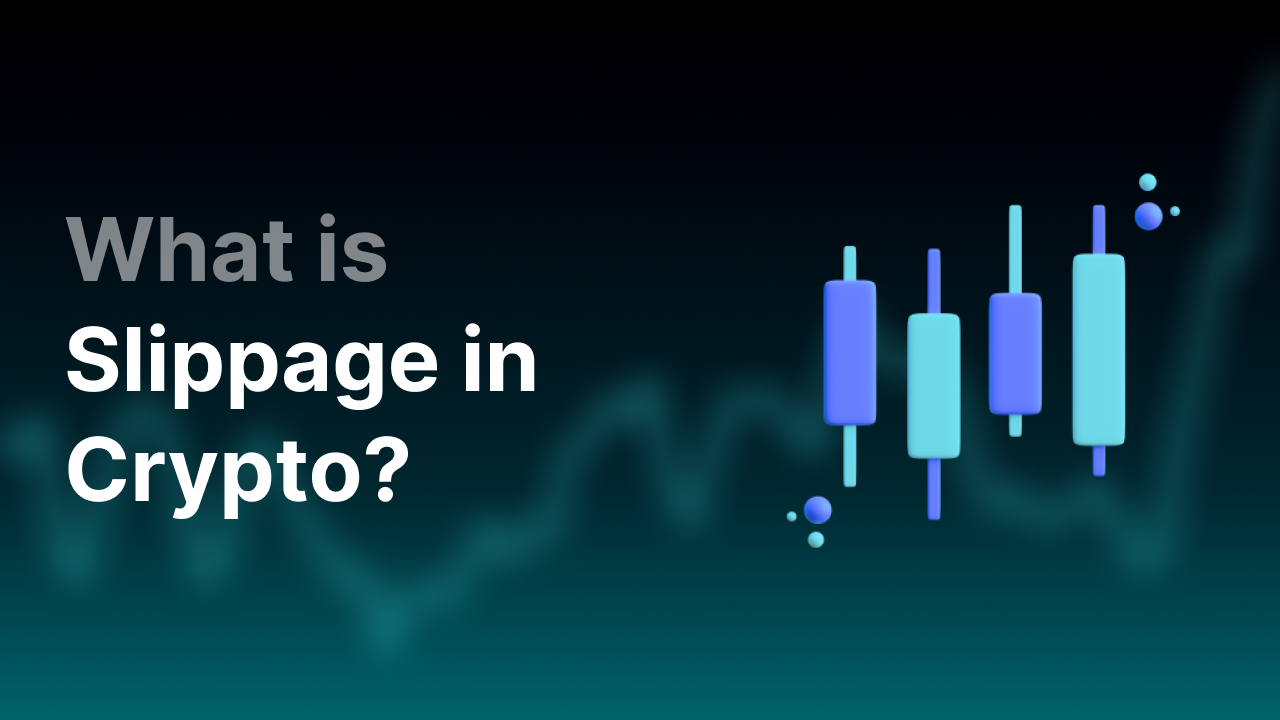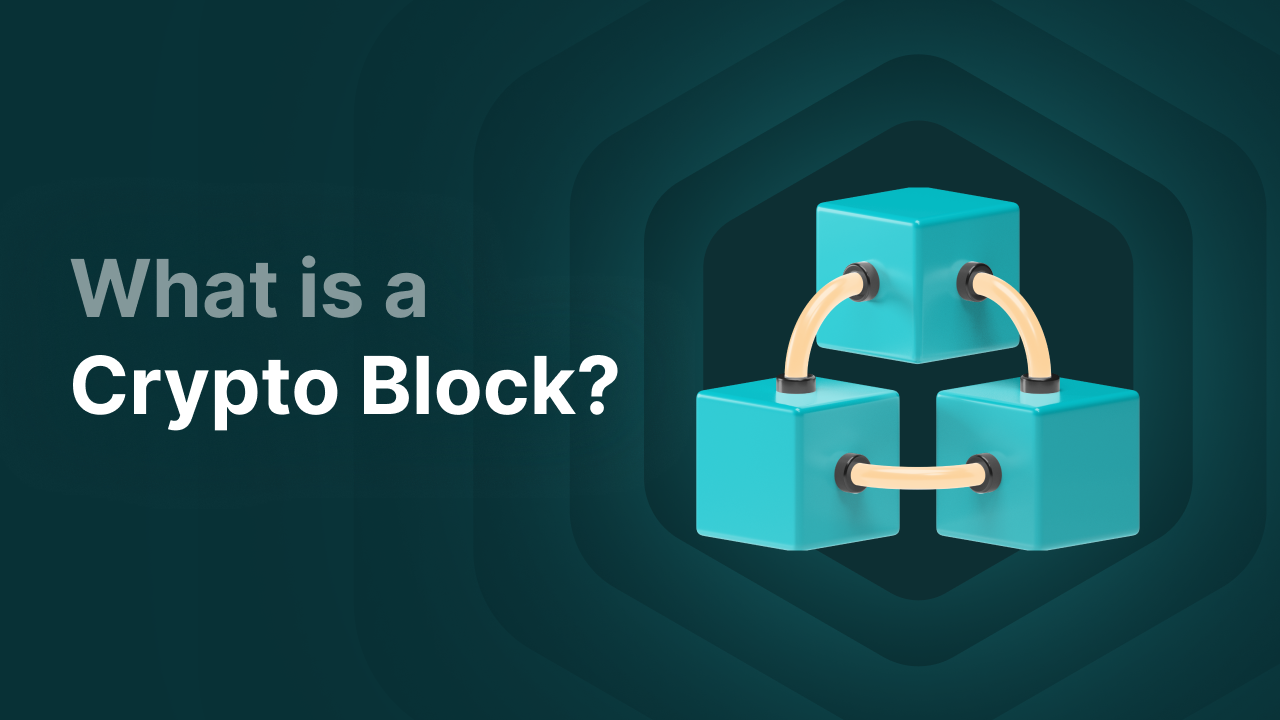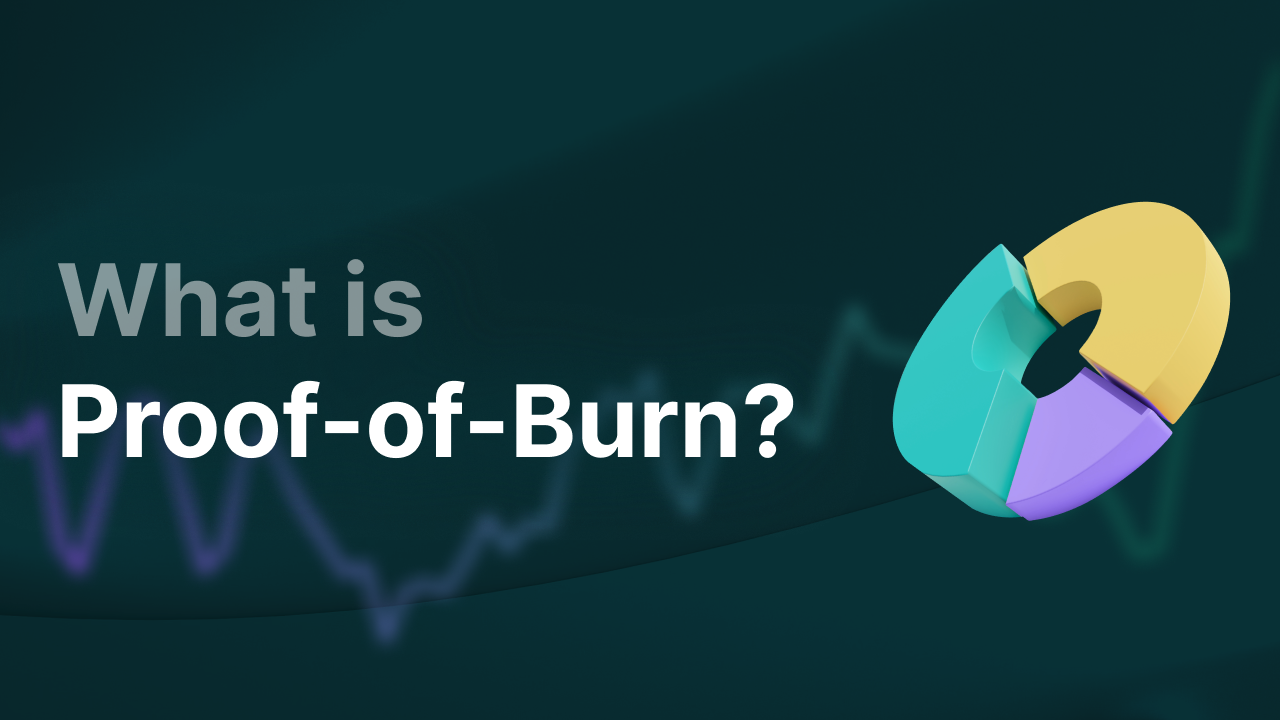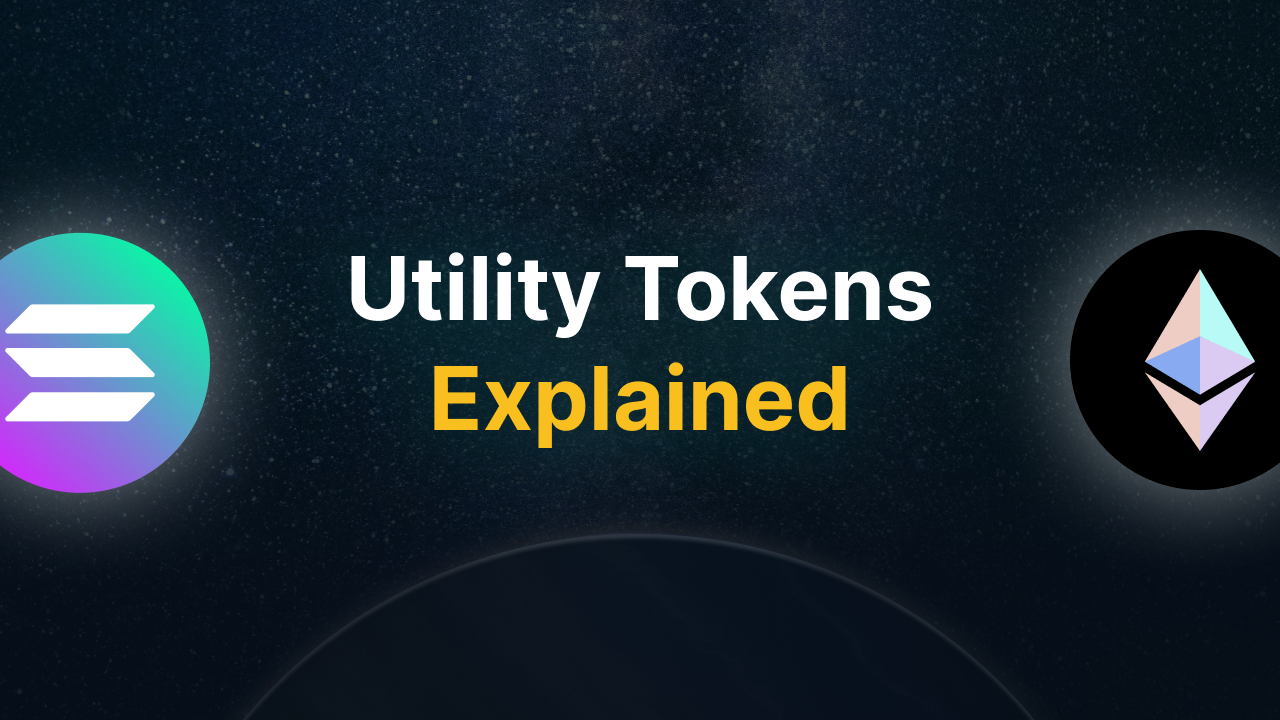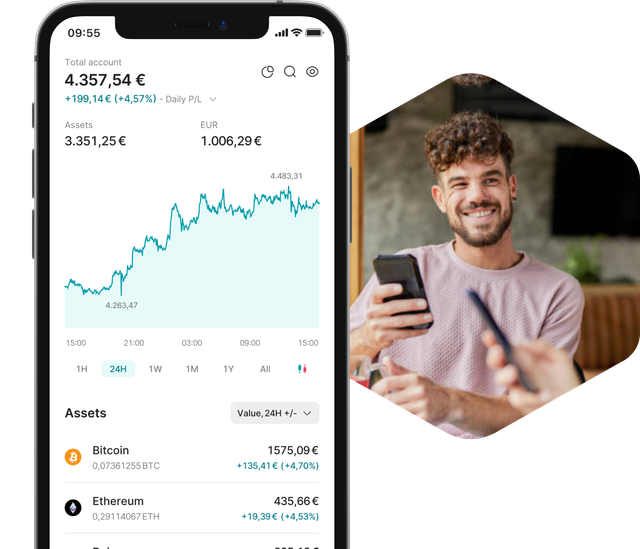What is DePIN in crypto?
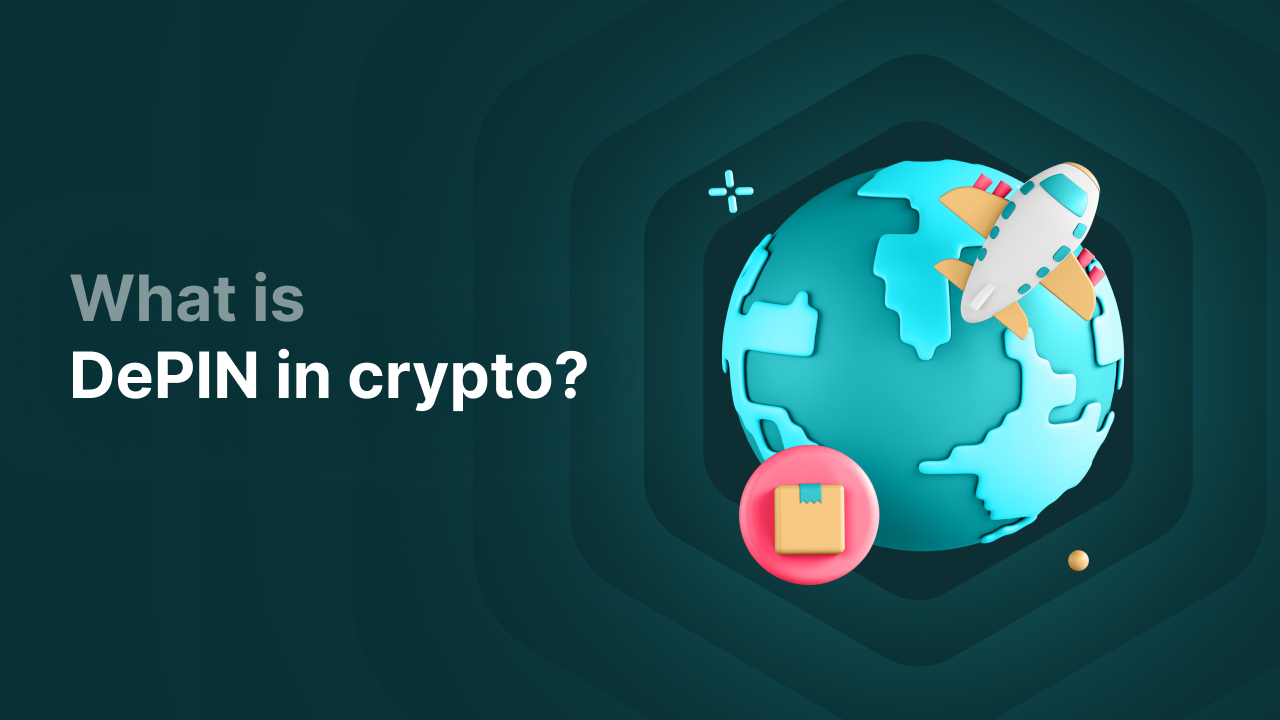
What is DePIN?
Decentralized Physical Infrastructure Networks (DePIN) are an emerging category of distributed networks where blockchain technology is applied to organize and coordinate physical infrastructure, such as wireless networks, energy supply, and storage capacity. In traditional infrastructure models, ownership and management are centralized with companies such as telecom providers, energy companies, and data centers. The organization and decision-making within such entities are usually not transparent to outsiders. DePIN, on the other hand, makes it possible for individuals and smaller entities to contribute to the development and management of infrastructure. This happens in a decentralized and transparent way, with the infrastructure split into smaller units that are managed globally by users. Participants are incentivized through cryptoeconomic reward mechanisms, usually in the form of tokens.
Key Takeaways
-
After Bitcoin (2009) and smart contracts on Ethereum (2015), DePIN represents a third step: using blockchain to organize and reward physical and digital infrastructure (such as energy, storage, and internet).
-
Instead of large companies investing billions, participants themselves provide small pieces of infrastructure (for example bandwidth, computing power, or energy). Blockchain records contributions and distributes rewards transparently in tokens.
-
The flywheel effect drives scalability. More participants → more infrastructure → higher token value → more investors and users. This effect allows DePIN to grow faster and cheaper than centralized models.
-
Projects like Filecoin, Helium, and Bittensor show that DePIN can compete with storage services, telecom networks, and even AI companies. However, competitive pressure remains enormous due to the scale, data, and resources of players like Google and Amazon.
Where does DePIN come from?
DePIN is a development within blockchain technology, searching for a real use case in everyday life beyond just processing transactions. DePIN is meant to drive blockchain adoption. It is, after the rise of Bitcoin and BTC (2009) and the introduction of smart contracts on Ethereum and ETH (2015), the next step in the development of decentralized networks, allowing not only the creation of digital assets but also the distribution of physical resources.
DePIN only really took shape between 2017 and 2019. In that period, projects with actual DePIN use cases emerged. Think of Helium, which launched its blockchain in 2019. They built a decentralized IoT network where individuals can operate hotspots in exchange for tokens. Similar initiatives also emerged, such as Filecoin (decentralized storage) and later DIMO (vehicle data).
The term DePIN itself is newer. It was introduced between 2022 and 2023 and became popular thanks to investment funds like Multicoin Capital, which named the category and systematically described it as Decentralized Physical Infrastructure Networks. Since then, DePIN has been used as an umbrella term for various projects that combine physical infrastructure with blockchain and digital tokens as rewards.
How does DePIN work?
DePIN functions as a provider of infrastructure, such as data storage and the delivery of internet and energy in a decentralized way. This happens by replacing the current centralized systems with a network of participants, each providing a part of the infrastructure. Management and maintenance therefore lie with multiple participants instead of centralized players, such as energy companies that supply the entire infrastructure. Anyone can join DePIN, which makes it very accessible. Behind this model is a reward system in the form of digital assets (crypto).
Within DePIN, blockchain plays an important and central role. The blockchain:
- records who contributed what;
- ensures transparent transactions, such as contracts, payments, and other agreements;
- distributes rewards in the form of tokens.
The blockchain is a decentralized network, which means you don’t need permission to participate. This is different from centralized parties that need to approve you and can therefore also exclude you. You can already participate easily by connecting your crypto wallet.
The DePIN flywheel
A term within DePIN is the DePIN flywheel. This is an effect that arises when participation increases:
- The more participants provide infrastructure (for example storage, internet, energy, or sensors), the more valuable the network becomes.
- As the network grows, the value of the tokens used in this ecosystem rises.
- That rising value attracts new investors, users, and developers.
- The network grows again, causing the flywheel to spin faster.
This self-reinforcing mechanism makes it possible for DePIN projects to scale up quickly, often faster and cheaper than centralized competitors.
Participating in DePIN
You can also easily participate in DePIN yourself. This can already be done by holding the native token of a DePIN project in your own wallet. This way you get access to the project, without first having to request permission from a central party. This also means there are no long legal procedures involving multiple parties. Instead, everything is recorded on the blockchain and according to established standards. You know exactly what you get, and everything happens according to those agreements.
Depending on the type of DePIN, you can participate by:
- Providing hardware. For example, you can offer a hotspot for an IoT network. This can be a hotspot for different purposes, such as a charging station or a sensor.
- Providing data. Think of music files, traffic information, or energy production.
- Investing in tokens. This way you help support the network financially.
For participation you receive a reward, paid out in tokens. Which tokens these are depends on the project.
Competing with major players
DePIN is still in its infancy. To really gain ground, it will have to compete with large centralized players. The goal is to provide an alternative to existing infrastructure. These centralized parties have built massive databases that are difficult to match. Within a DePIN network, comparable data and services must therefore become available, and this takes time.
Take YouTube as an example. They have a gigantic database of videos and music provided by millions of content creators. Within a DePIN, the content creator can earn tokens when a video is added. They can also be rewarded more as more people watch their content. As the database grows, such a DePIN platform can increasingly become an alternative to existing players.
This example is just the tip of the iceberg, because DePIN can compete in many more areas. Think of:
- Storage: competition with Dropbox or Google Drive (e.g. Filecoin).
- Energy: local production and trading of solar or wind energy.
- Mobility: decentralized car-sharing or scooter-sharing networks.
- Internet access: decentralized WiFi networks (e.g. Helium).
What is the goal of DePIN?
DePIN aims to replace established, wealthy, and centralized players with a decentralized network of users who jointly set up, expand, and maintain the infrastructure. It seeks to address dependence on individuals and entities such as shareholders and CEOs by delivering a service where power lies with the community itself. Blockchain technology serves as the foundation.
DePIN gives Web3 new use cases and wants to compete with tech giants within Web2, such as Google and Meta.
The strength of DePIN
A DePIN network can be a powerful alternative because it utilizes resources people already use daily:
- Anyone can contribute with their own hardware, data, or energy.
- The more people join, the stronger and cheaper the network becomes.
- The community jointly determines the rules, instead of a central authority.
Through this approach, DePIN is capable of potentially replacing existing infrastructures in the future. For that to happen, adoption must increase, and DePIN must be recognized by society as a good and reliable alternative.
Physical resource networks
The existing physical infrastructure is a very expensive system. Complete cable networks must be installed for it. Billions are invested in this process, financed by large corporations and governments. Think of your internet provider: when you switch providers, it may even require digging up your street to lay a cable to your home.
Because of the complexity of this process, there are usually only a few major players who set the price for consumers. They hold a monopoly on their product or service. Their focus lies in recovering their investment and maximizing profits.
DePIN addresses this issue. It offers a less capital-intensive alternative that anyone can contribute to. Thousands of participants can add small pieces of infrastructure, creating a large and well-functioning system. For example, by providing a hotspot to deliver WiFi services. The more participants there are, the stronger and cheaper the network becomes.
Digital resource networks
Not only physical infrastructure can be replaced by DePIN. There are also many examples where DePIN can replace digital networks. Participants can share computing power or energy, eliminating the need for expensive digging or heavy hardware.
Examples of shareable digital resources:
- Bandwidth (sharing your internet connection).
- Computing power (making unused GPU or CPU capacity available).
- Storage space (using unused disk space for a decentralized cloud).
- Energy (sharing excess solar energy with your neighbors).
Since these resources already exist and are immediately usable, digital DePIN networks can grow at lightning speed. This often makes them the first step toward broader adoption.
Power of large multinationals
Centralized parties have the power to make changes whenever they want. This may be to increase profits or to eliminate competitors. Often, these changes happen at the expense of users.
Examples:
- YouTube pushes viewers toward paid subscriptions. Without a subscription, you are overwhelmed with annoying ads.
- Companies violate your privacy by selling your data to third parties. As a result, you are targeted with ads from companies you never asked for.
- Competitors and startups are bought out or pushed aside to protect the monopolies of major players.
DePIN aims to break this cycle by returning power to the users themselves.
Examples of DePIN networks
There are now numerous DePIN projects, each contributing in their own way to a decentralized infrastructure. Some well-known examples include:
-
Filecoin: This network makes it possible to rent out unused storage space. Those who provide disk capacity receive FIL tokens as a reward. Files are divided into fragments and distributed across multiple nodes, allowing users to securely and efficiently retrieve their data.
-
Arweave: Unlike many other storage solutions, Arweave focuses on permanent storage. Through its so-called blockweave, content ranging from articles to NFTs is paid for once and then remains accessible forever.
-
Render Network: This platform creates a marketplace for graphical computing power. Owners of powerful GPUs can make their hardware available for demanding tasks such as 3D rendering and animation. Creators pay in RNDR tokens and gain access to affordable computing power.
-
The Graph: Many applications need blockchain data, such as prices or transaction statistics. The Graph organizes this data via indexers and makes it accessible to developers. This allows dApps to directly access reliable and up-to-date information.
-
Theta Network: Theta offers a decentralized solution for video streaming. Users who contribute bandwidth and storage are rewarded with THETA tokens. Major media companies use the network to distribute videos without relying on central servers.
-
Hivemapper: Using dashcams, an up-to-date world map is created. Drivers who collect footage are rewarded with HONEY tokens. Because the map is updated daily, this project serves as an alternative to traditional mapping platforms.
-
IoTeX MachineFi: IoTeX connects real-world devices such as sensors, wearables, and smart thermostats to the blockchain. Users can make data from their devices available and receive tokens in return. This creates an internet of "smart things" owned by the community.
-
Helium: Helium focuses on decentralized wireless networks. By placing a hotspot at home, you provide IoT and 5G coverage in exchange for HNT tokens. The project already has hundreds of thousands of active nodes and has grown into a leading DePIN initiative.
-
React Network: This network focuses on the energy market. Through smart meters, households can share their excess energy or battery capacity with the community. When demand arises, this capacity is utilized, and participants are rewarded in tokens.
-
Bittensor: Bittensor is building an open and decentralized AI ecosystem. Users who contribute computing power or machine learning models are rewarded with the TAO token. The goal is to provide an alternative to the centralized AI models of major tech companies.
-
Pulse: Pulse combines blockchain with health data. Wearables such as smartwatches can securely share information on sleep, heart rate, and activity with the network. Participants who make their data available receive a reward.
-
Plural Energy: This project makes it possible to directly invest in renewable energy. Through tokenized projects, participants can finance solar or wind farms and benefit from green energy production without the involvement of traditional energy companies.
Advantages of DePIN
- Easy and cheap to get started. Most infrastructure comes from participants, making it inexpensive to launch and easy to scale since increased usage leads to a stronger network.
- Using DePIN services is often cheaper than those of large established companies, which typically charge high subscription fees with hidden costs. In DePIN projects, costs are transparent and fairer.
- DePIN involves no competition among participants. Instead, they collaborate rather than compete.
- Rewards are distributed fairly among participants, without intermediaries.
- The blockchain is transparent, meaning all data is public. Data in centralized networks, by contrast, is less transparent and often hidden.
- DePIN is decentralized, meaning you are not dependent on (large) companies that can change conditions at any time, such as prices or restrictions.
- The blockchain keeps running. This also means updates can take place in real time at low cost. Take Hivemapper as an example: its map is continuously updated. With Google Maps, this is a costly process requiring a complete update.
- DePIN builds real communities, unlike large companies that only want to sell their service and reward employees with just a salary. With DePIN, you truly become part of the project and feel like it. Everyone is essentially a stakeholder.
- Companies face high costs such as office buildings, staff, maintenance, development, and equipment. In a decentralized network, these costs are much lower since participants contribute voluntarily.
Disadvantages of DePIN
- Contributing to a DePIN project can be technically complex, making it difficult for regular users who may face tasks such as software updates or acquiring special equipment. This can discourage participation and cause people to drop out.
- Blockchain technology and crypto are still unfamiliar to most people. They may have heard of it but know little about it, which can prevent them from joining.
- Costs are higher when there are not many participants yet. Especially new projects suffer from this: it can be more expensive to participate than the rewards generated. This makes it difficult for projects to get off the ground.
- The tokens participants receive as rewards are volatile. This means the value of earnings can fluctuate greatly, creating uncertainty and discouraging participation.
- Using centralized networks is often easier. People are accustomed to them, and they are considered the norm socially. As a result, it may take a long time before DePIN crypto projects achieve widespread adoption.
- Competing with large established companies like Google, Microsoft, and Amazon is a major challenge. They have massive amounts of data and customers, giving them strong market positions to push out competitors. It can take years before a DePIN project is even considered a serious competitor.
Conclusion
DePIN represents a promising development within the blockchain world by returning control over physical and digital infrastructure to the community. With low entry costs, transparency, and fair rewards, the model can be attractive for both users and developers. At the same time, it offers an alternative to the often expensive, closed, and profit-driven services of Big Tech.
However, DePIN also faces challenges. The technical barrier and lack of blockchain familiarity can slow adoption, while the competitive pressure from established companies is immense. Additionally, token volatility remains a risk for participants.
Ultimately, the strength of DePIN lies in the combination of collaboration, decentralization, and scalability. If it can overcome these hurdles, DePIN could become a key component in the transition toward a more open, fair, and community-driven digital and physical infrastructure.
